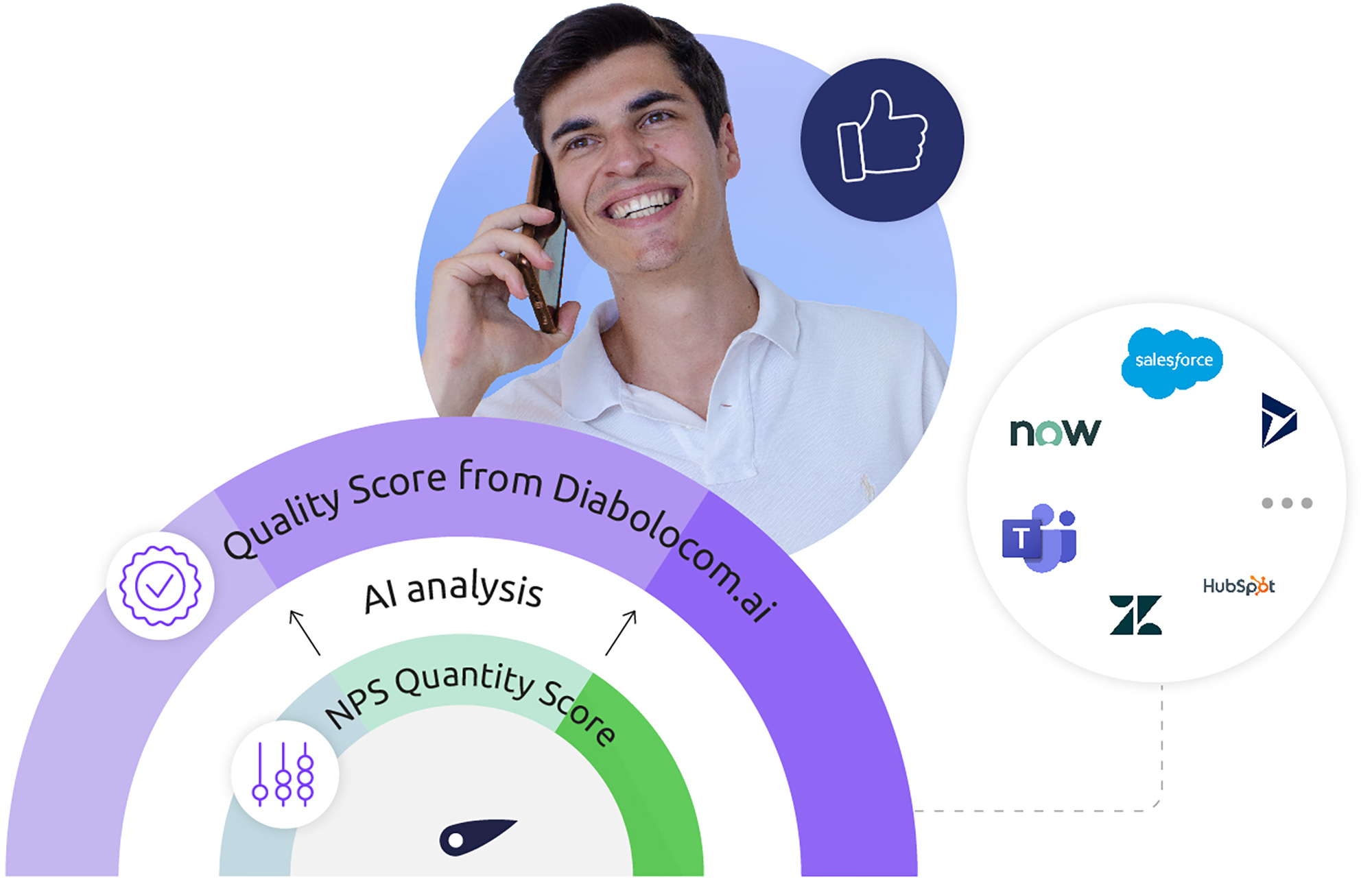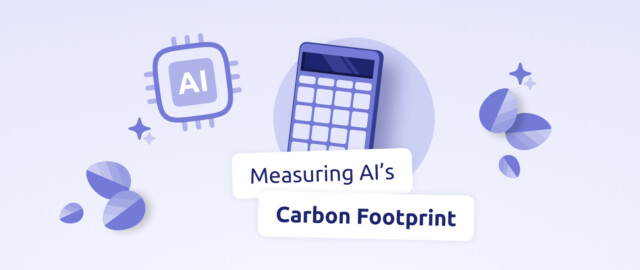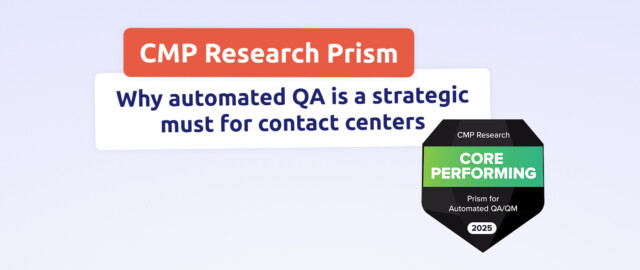Current scores for measuring customer satisfaction
Customer satisfaction scores are quantitative measures of consumer satisfaction, based on surveys or evaluations.
Net Promoter Score (NPS)
The Net Promoter Score has become one of the most commonly used indicators of customer satisfaction. It is defined by the following question: “On a scale of 0 to 10, would you recommend our company/product/service to a friend or colleague?
Respondents fall into three categories:
- promoters (answers between 9 and 10)
- liabilities (answers between 7 and 8)
- detractors (answers between 0 and 6)
The NPS is then calculated by subtracting the percentage of detractors from the percentage of promoters.

Customer Satisfaction Score (CSAT)
The Customer Satisfaction Score is another valuable indicator of customer satisfaction. It is generally based on a multiple-choice question addressed to customers.
Customers rate their satisfaction with a product or service on a scale of 1 to 5 or 1 to 7.
Other evaluation scores
In addition to these two indicators, there are a multitude of customer satisfaction scores such as :
- The Customer Effort Score assesses the ease with which customers can complete a task, such as solving a problem.
- Time to First Value measures the time it takes for a customer to obtain value from a product or service.
The choice of indicator depends on the company’s objectives, in particular the aspects of the customer experience it wishes to improve.
The advantages and disadvantages of these scores
Advantages and disadvantages of NPS
NPS is simple to understand and administer, which makes it popular for categorizing customers.
However, it does not capture the complexity of customer opinions, and can be distorted by cultural or geographical biases.
Advantages and disadvantages of CSAT
The main advantage of CSAT is its ability to precisely identify areas for improvement. It can be used to assess satisfaction at different customer contact points.
However, it may be limited by the wording of the question and the rating scale used, requiring further investigation.
Advantages and disadvantages of alternative scores
Other scores seen above are useful for assessing customer satisfaction by focusing on a specific aspect.
However, their relevance is highly context-dependent, so it is essential to complete these indicators.
Finally, customer satisfaction scores have one major limitation: they don’t capture qualitative customer feedback. It is therefore essential to combine quantitative indicators with qualitative feedback analysis.
Revolutionizing Customer Satisfaction Measurement with Artificial Intelligence (AI)
Better semantic understanding
- Semantic analysis opens up new horizons
Semantic analysis allows us to examine customer reviews in detail, deciphering key words, linguistic trends and emotions expressed.
It can reveal specific aspects of a product or service that give rise to satisfaction or frustration. And it helps detect recurring problems and identify opportunities for improvement.
- … towards new indicators
Semantic analysis transforms linguistic data into concrete insights.
AI automatically extracts information from customer comments, identifying recurring themes, associated sentiments and emerging trends. The extracted data is then used to define new scores to complement the existing ones.
A better calculation method
- Enriched data
Artificial Intelligence enriches customer feedback with third-party data, from past interactions or even tone of voice.
AI uses natural language processing and machine learning algorithms. This technology identifies emotions, unexpressed needs and hidden motives.
- Evolving factors
When AI calculates customer satisfaction scores, it takes into account various factors and their evolution. These factors fluctuate according to specific use cases, the type of company, the sector of activity, and so on.
For example, customer priorities in the technology sector are different from those in the healthcare sector. AI takes these differences into account to provide scores that reflect the reality of each context.
- Reduced potential bias
Unlike manual assessments, which can be influenced by human bias or error, AI analyzes data completely objectively.
Customer feedback is evaluated in a uniform way, regardless of factors such as age, gender or origin. This ensures that companies can make more informed decisions to improve the customer experience.
Refined customer satisfaction scores with Diabolocom AI
Semantic understanding
- Voice processing
Transcription-based voice processing is a technology adopted by Diabolocom that transforms voice conversations into written text. Thanks to automatic speech processing algorithms, audio interactions between customer and agent are converted into written words in a matter of seconds.
AI then analyzes the content to identify elements such as sentiments expressed, keywords and conversational patterns. This approach enables call centers to identify recurring problems and measure customer service quality.
- Text processing
Text processing by AI makes it possible to assess customer satisfaction from a variety of sources (emails, SMS, chats, social networks…). Diabolocom’s AI collects this textual data in real time, then analyzes it.
It identifies trends, relevant keywords, emotions expressed and even nuances in language. Semantic analysis offers a global view of customer feedback from various channels.
Semantic analysis
- Detecting mixed reviews
Diabolocom’s AI tool goes beyond simple quantitative scores as it explores the nuances of language, including understanding the context and meaning of each of the customer’s comments, beyond simple key words to detect.
For example, semantic analysis can decipher the nuances in comments that begin positively but end with concerns. Customer opinion is more mixed than it seems, so action needs to be taken. Semantic analysis adds an emotional dimension to data, indispensable in customer relations.
- Product and service detection
Diabolocom’s semantic analysis plays a crucial role in detecting products and services mentioned by customers. This is possible even in the case of linguistic variations or incorrect spelling.
Companies can then track the reputation of their offerings and make better strategic decisions.
Data processing
- Provision in customer relations tool
Data enriched by conversational analysis can be integrated in real time into post-call or customer interaction scenarios.
In fact, Diabolocom enables these data to be seamlessly integrated into its operational scenarios. New AI-derived variables can be incorporated into scenario blocks and coupled with existing variables.
- Export to other tools
Data is available in the Diabolocom interface and can be easily exported to the market’s leading CRMs, with CTI integration. In this way, companies can access data refined by AI analysis in their existing tools.
Thanks to this integration, the company’s other departments can benefit from new keys to optimizing the customer journey.
- Personalized behavior
By deciphering customer interactions, Diabolocom’s AI reveals valuable information about their needs and emotions. This deeper understanding of the consumer enables agents to adapt their pitch in real time.
Agents receive relevant recommendations for each customer. And every interaction can become a unique experience.
In conclusion, the future of customer satisfaction measurement lies in AI’s hands. Tools like Diabolocom’s AI solution not only enhance our understanding of customer feedback but also help businesses refine their approach. By synergizing traditional scores with AI-driven insights, companies can achieve a holistic view of customer satisfaction, propelling them ahead in the competitive landscape.
Curious to know more about Diabolocom?



